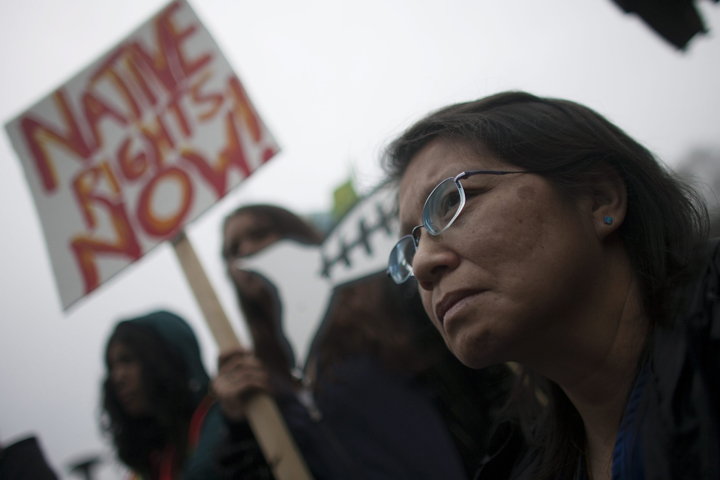A group of youth from a remote First Nations community where mercury has poisoned the river for nearly 50 years travelled 1,700 kilometres to the Ontario legislature Thursday to demand action from government.

“Why can’t you just fix it right now?” said 16-year-old Draven Kirkness of the Grassy Narrows First Nation. “We want the water clean already. It’s been like that for so long. We’re just asking for it to be clean. It’s not that hard.”
Grassy Narrows, near the Manitoba border, has dealt with mercury poisoning since the Dryden Chemical Company dumped 9,000 kilograms of it into the Wabigoon and English River systems during the 1960s.
READ MORE: How an old recessionary plan may be keeping Canada’s First Nations in ‘third world’ conditions
But mercury concentrations haven’t decreased in 30 years. It is still present in dangerous levels in sediment and in fish, causing ongoing devastating health and economic impacts in the community.
A new report says it is possible to remediate the mercury in the water, but the government needs to find out if there’s a new source of mercury that is keeping levels so high or if it’s still leaching from the old Dryden chemical plant.
The government ordered the residents of Grassy Narrows to stop eating fish in the 1970s, but was reluctant to attempt to clean up the mercury for fears it would make the contamination worse.
The current Liberal government says it wants to be sure cleaning the water won’t stir up more of the chemical.
READ MORE: Report calls for mercury dumped in Wabigoon River in 1960s to be safely removed
Environment Minister Glen Murray said the government will now work to identify which process will best be able to locate the source of the mercury, before remediation can start.
“The current situation is unacceptable, but we have to make sure, as the premier said, that we’re undertaking efficient, near-term action, consistent with the leadership and desires of the community and good science that will actually solve the problem and not make it worse,” he said.
“I will not see this continue on my watch.”
After Murray finished speaking in question period, the approximately two dozen youth put on T-shirts en masse that read “Water is sacred.” Such displays are not allowed in the legislature’s public galleries and they were asked to leave.
They protested outside the legislature later, and Grassy Narrows Chief Simon Fobister said the community wants action.
“No more fancy words, no more studies,” he said. “We know the mercury is there. We’ve lived it. We’ve lost our economy as a result, we’ve lost our health as a result. Today we want action. We just want the premier to say, ‘I’m going to clean this river.”‘
Nineteen-year-old Darwin Fobister said he is affected by mercury poisoning.
“I have headaches,” he said. “I have things that are not normal for a human to have every day. I’m weak. I’m a young guy and I shouldn’t have to deal with this.”



Comments